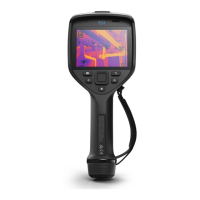Failing areaGood areaExample for lightweight built-up cladding with defective
insulation
1.50.3Outside surface temperature in ℃
0.750.95Surface factor from IP17/01
0.92Critical external surface temperature factor, after IP17/01
5.180Insulation thickness to give this level of performance, mm
1.920.35Local U value W/m
2
K
0.78UKTA TN1 surface factor
0.93UKTA TN1 surface factor outside
Notes to the table
1 Values of surface resistances taken from ADL2 2001, are:
■ Inside surface 0.13 m
2
K/W
■ Outside surface 0.04 m
2
K/W
These originate from BS EN ISO 6946 (BN EN ISO 6946:1997 Building components
and building elements - Thermal resistance and thermal transmittance - Calculation
method).
2 Thermal insulation used here is assumed to have a conductivity of 0.03 W/m K.
3 The difference in temperature between an anomaly and the good areas is 1.2 de-
grees on the outside and 4.1 degrees on the inside.
4 The UKTA TN1 surface temperature factor for internal surveys is:
F
si
= (T
sia
– T
so
)/(T
si
– T
so
)
where:
T
sia
= internal surface temperature at anomaly
T
so
= external surface temperature (good area)
T
si
= internal surface temperature (good area)
5 The UKTA TN1 surface temperature factor for external surveys is:
F
so
= (T
soa
– T
si
)/(T
so
– T
si
)
where T
soa
= external surface temperature at anomaly
27.4.8.4.3 Selecting maximum acceptable defect area
The allowable area of defect is a quality control issue. It can be argued that there
should be no area on which condensation, mould growth or defective insulation will
occur and any such anomalies should be included in the report. However, a commonly
used value of 0.1% of the building exposed surface area is generally accepted as the
maximum combined defect area allowable to comply with the Building Regulations.
This represents one square metre in every thousand.
Publ. No. T559597 Rev. a554 – ENGLISH (EN) – September 27, 2011 123
27 – Introduction to building thermography

